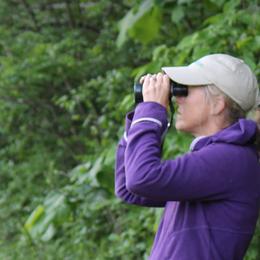We've seen a great deal of info on the linkage between diversified farming and bird conservation. A recent study published by the US Department of Agriculture demonstrates the power of diversified farms to provide habitat for shrubland birds. The main points made by the study are:
- Small diversified farms provide shrubland habitat equal in quality to other non-farm shrubland habitat in New England.
- 52% of the birds observed on small farms were shrubland species. Some of the shrubland species used open habitats such as crover crops and fallow fields, while others were observed in dense shrubby and wooded areas. Birds that are considered to be pests to crops were more associated with rowcrops, large fields, and bare ground than smaller fields with cover crops.
- There are many ways that farmers can help birds on their farms while also minimizing bird pests, including reducing the sizes of fields, allowing tall dense vegetation to grow in non-production areas, and promoting hedgerows and woodland habitats in field margins.
In addition, several videos produced by The Wild Farm Alliance demonstrate how certain bird species, namely raptors such as American Kestrel can benefit farmers. A few examples include:
- American Kestrels Save Growers Money
- The Powers of Raptors for Pest Control
- Diversify Your Farm to Support Birds and Make it Safer
To learn more about Audubon Vermont's Bird and Bee Friendly Farming and Shrubland Bird Programs, visit:






